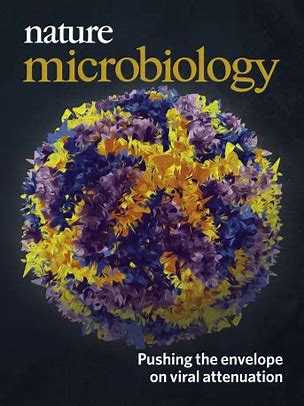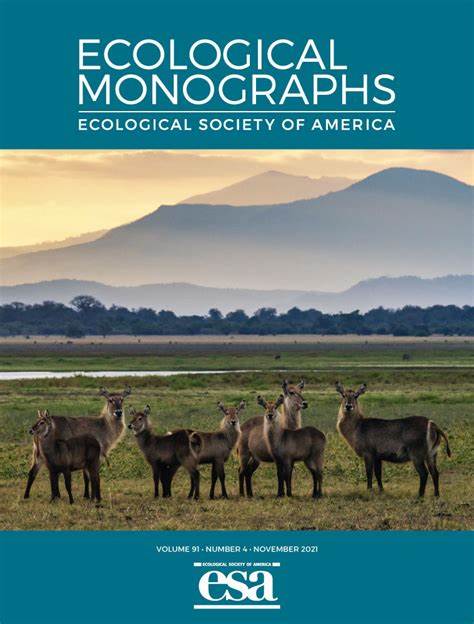Experimentally decomposing phytoplankton community change into ecological and evolutionary contributions
The authors experimentally quantified ecological and evolutionary contributions to total phytoplankton community change in response to elevated CO2 concentrations. They show a novel experimental approach to study ecological and evolutionary contributions to community features, and observed a decline in phytoplankton abundance to elevated CO2 that could be mainly explained by ecological changes.
Recovery of freshwater microbial communities after extreme rain events is mediated by cyclic succession
The authors investigated the resilience of aquatic microbial communities, especially in small ponds, against flooding events. The most interesting result of their high temporal-resolution study was that the microbial communities, in particular bacteria, were surprisingly resilient against flooding events and that bacterial community repeatedly showed a defined path of recovery.
Widespread deoxygenation of temperate lakes
The authors analyzed a combined total of 45,148 dissolved oxygen and temperature profiles and calculate trends for 393 temperate lakes that span 1941 to 2017. They found that a decline in dissolved oxygen is widespread in surface and deep-water habitats. Declines in dissolved oxygen in freshwater are 2.75 to 9.3 times greater than observed in the world’s ocean.
Corrigendum to: The global Microcystis interactome
The authors surveyed the microbiome associated with Microcystis aeruginosa during blooms in 12 lakes. Their results indicate that M. aeruginosa is cosmopolitan in lakes across a 280° longitudinal and 90° latitudinal gradient. The microbiome communities were represented by a wide range of operational taxonomic units and relative abundances which determine the success of the cyanobacteria blooms.
Characterizing the “fungal shunt”: parasitic fungi on diatoms affect carbon flow and bacterial communities in aquatic microbial food webs
The study demonstrates that parasitic fungi profoundly modify microbial interactions through several mechanisms (e.g., stimulating bacterial colonization on phytoplankton cells, altering the community composition of bacteria). Hence, fungal microparasites can substantially shape the microbially mediated carbon flow at the base of aquatic food webs which we termed "fungal shunt" .
Marine algae facilitate transfer of microplastics and associated pollutants into food webs
In this conceptual paper, the authors argue that micro- and macro-algae represent an underappreciated, yet, important pathway for transporting microplastics and associated pollutants via marine food webs to humans, facilitating potential invasion of pathogens into the human body. For the assessment of human health risks, interactions between microplastics and algae need to be explored.
Local disconnects in global discourses: the unintended consequences of marine mammal protection on small-scale fishers
Efforts to protect sea lions along South America's west coast have contributed to species recovery, but also to conflict between sea lions and small-scale fisheries. To understand the concerns, the authors assessed how 301 coastal small-scale fishers perceive their interactions with the sea lions. They propose solutions to manage conflict that are sensitive to heterogeneity among fisher groups.
Setting robust biodiversity goals
The new global biodiversity framework (GBF) must drive action to reverse the decline of biodiversity. However, the draft goals and targets fail to set out these clear outcomes. The authors propose modifications that would help to reveal the specific contribution of each action and provide clarity on whether the achievement of action targets would be adequate to achieve the outcome goals.
A novel measurement-based model for calculating O2 flux at interfaces in aquatic environments
This study presents a novel model approach for diffusive fluxes of dissolved gases, nutrients, and solutes from concentration profiles measured across the substrate-water interfaces using microsensors. The model offers a robust computational scheme for automatized determination of the interface position and enables precise calculations of the interfacial diffusive fluxes simultaneously.
From microbes to mammals: agriculture homogenizes pond biodiversity across different land-use types
The team investigated the aquatic biodiversity in ponds located in different land-use types embedded in an agricultural area. Intensive agriculture erased most differences in aquatic biodiversity between grasslands, forests, and arable fields across all species from microbes to large organisms. Sediments, serveing as a biodiversity archive, reveal that such differences occured in the area.










